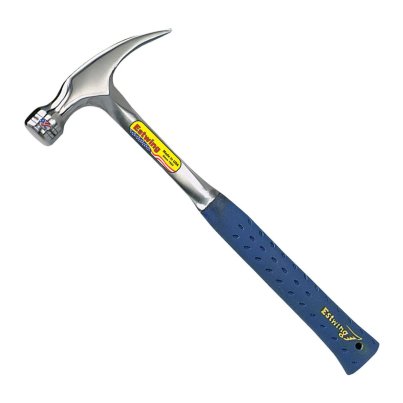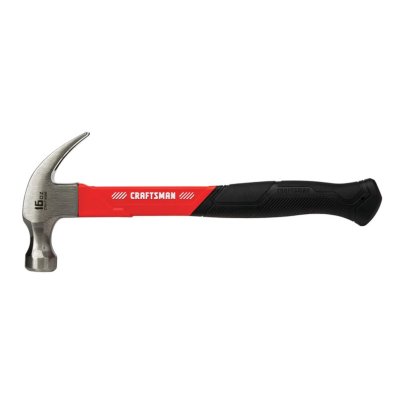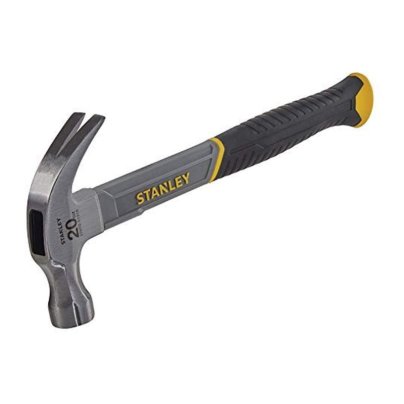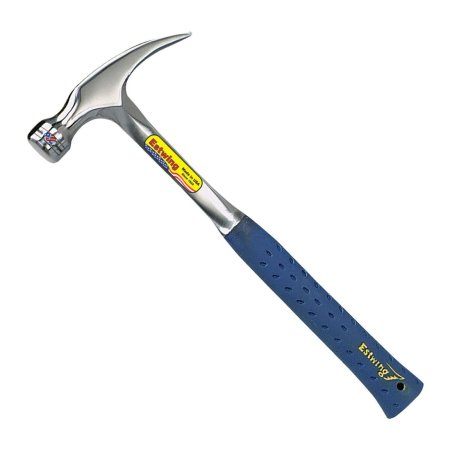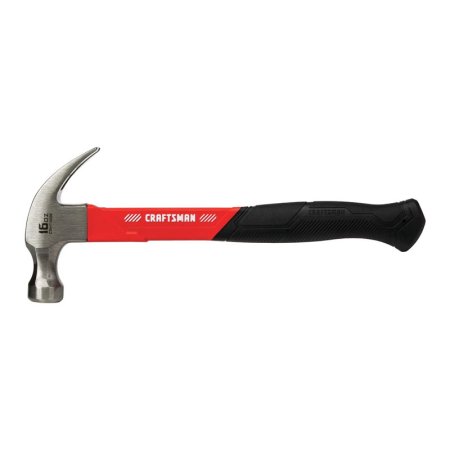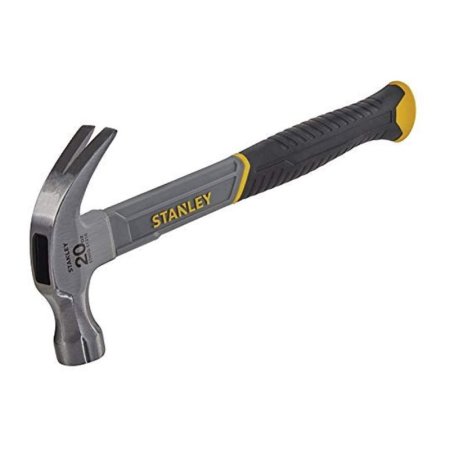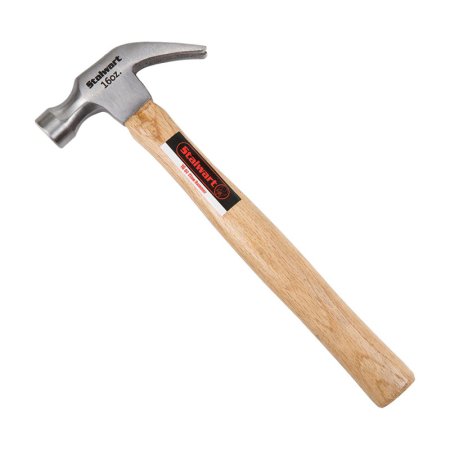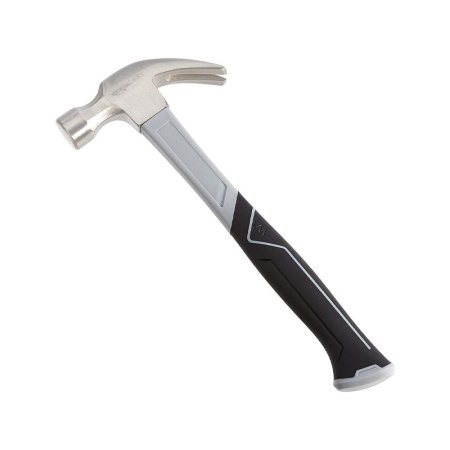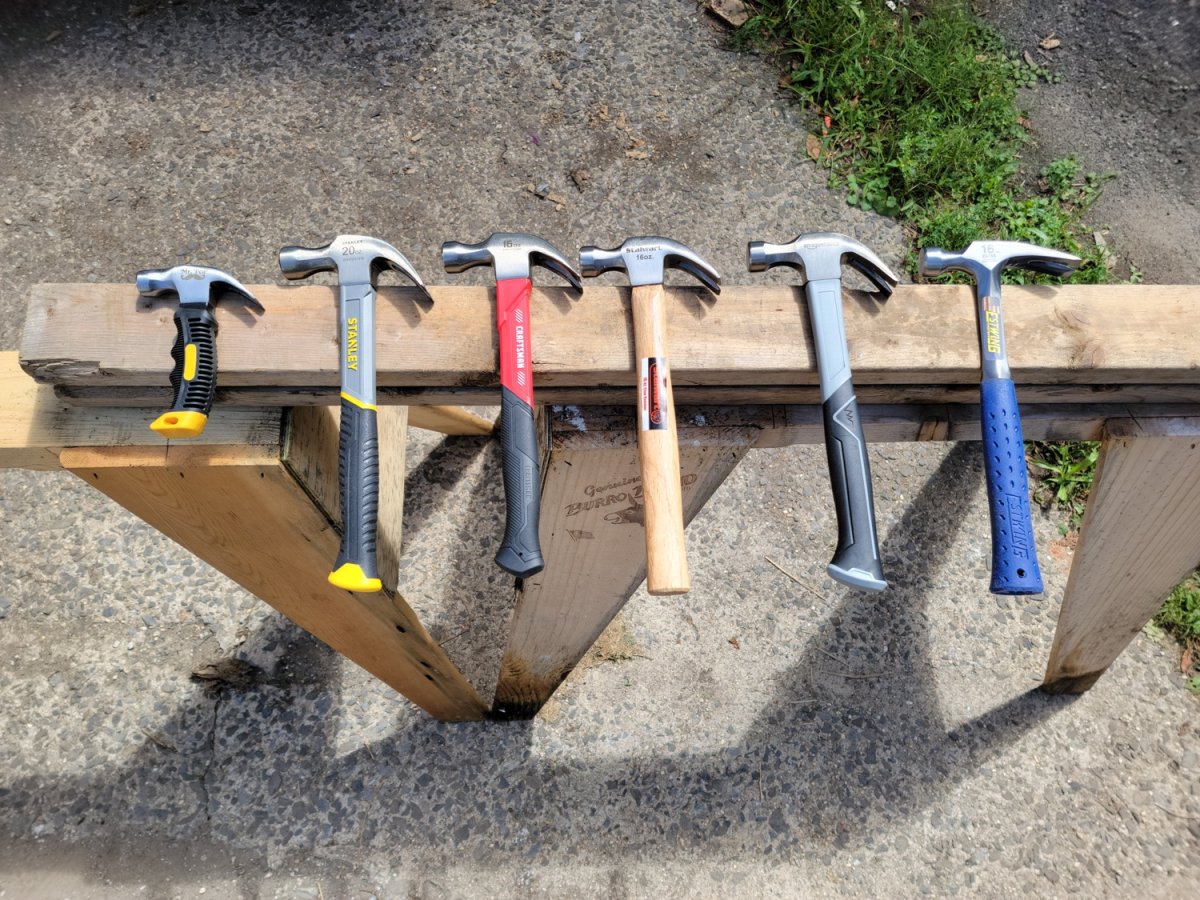
We may earn revenue from the products available on this page and participate in affiliate programs. Learn More ›
The more fix-it projects you tackle, the more crowded your toolbox becomes. But facts are facts: there’s no rival or replacement for a good hammer. This is still—and forever will be—a handy person’s must-have. Aside from the screwdriver, a hammer is likely the most frequently reached-for tool, whether for driving nails in or pulling them out.
You need to know what to look for. The right hammer feels good in the hand and makes jobs easier—simple as that. The wrong hammer can be hard on the wrist and palm, can put your fingers at higher risk of getting smashed. The wrong hammer might even break during heavy use.
Below, read our tips for choosing the best hammer for your project needs and budget, and see which hammers we chose as top picks after testing many of the most popular options available today.
- BEST OVERALL: Estwing Rip Claw 16-Ounce Hammer
- BEST VALUE: CRAFTSMAN Hammer, Fiberglass, 16 oz.
- BEST FOR HEAVY DUTY: Stanley Stht0-5130 20Oz Fiberglass Curved Claw Hammer
- BEST FOR LIGHT DUTY: Stalwart 75-HT3000 16 oz Natural Hardwood Claw
- BEST FIBERGLASS: Amazon Basics Fiberglass Handle Claw Hammer – 20 oz.
- BEST GRIP: Irwin Fiberglass General Purpose Claw Hammer, 16 oz
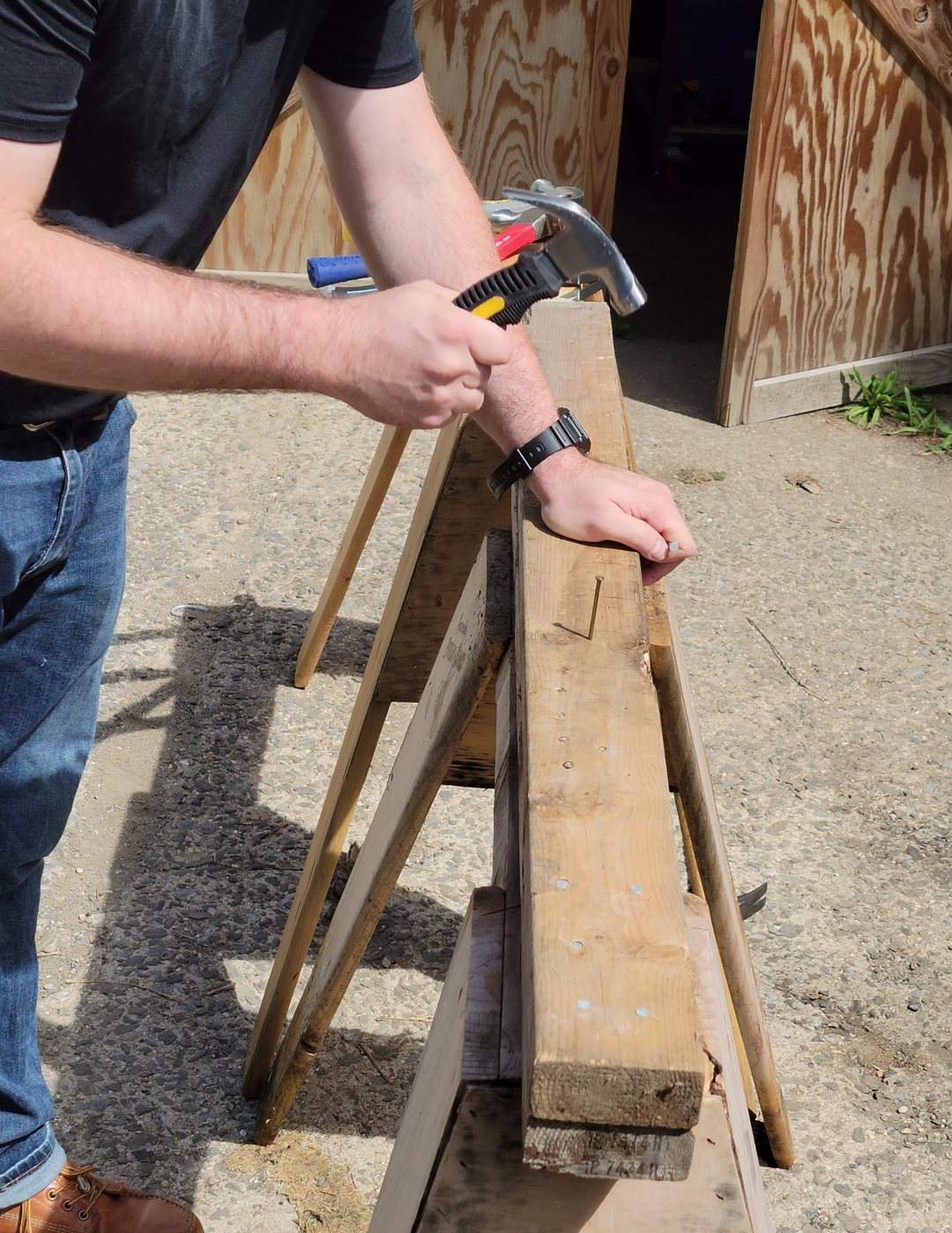
What to Consider When Choosing a Hammer
The best hammer is safe, does not cause undue fatigue, and helps with multiple DIY jobs. When choosing, look at the face, claw, length, and weight of the hammer, and make sure to be realistic about your needs. Pro-level models are appealing for their heft and durability, but heavier, longer hammers can be tiring or even cumbersome to swing, and most common tasks around the home don’t require their level power.
Face
Most hammers have a forged steel head (although titanium is available on pricier models), with either a smooth face or a waffled or milled face. A smooth face is less likely to cause damage if you miss your swing. A textured face, while better able to “grab” the nail, will destroy a finished surface, making these types of hammers most suitable for framing applications. For the average DIYer, the best hammer has a smooth face; only those who do a fair amount of carpentry or major construction work will prefer the extra grip of a milled face.
Claw
As the name implies, a claw hammer has a cleaved blade opposite the face, which is used for pulling nails and prying lumber apart. There are two basic types of claw hammers—curved claw and rip claw.
- Curved claw hammers have rounded forks that curve back toward the handle of the hammer. They’re slightly shorter than rip claws, and for that reason are easier to wield, particularly in tight situations like working within stud bays or cabinets.
- Rip claw hammers feature claws that are fairly straight. This makes them well suited for heavy-duty jobs like framing and demolition—tearing up flooring, say, or spiking boards to lift them off a plywood deck. Rip claw hammers can also remove nails, but they do require a bit more room than a curved claw to do so.
Handle
A hammer should feel comfortable in hand and provide a good grip that helps absorb shocks. While both steel and fiberglass handles are sturdy enough to absorb the force of hammering, the materials have their differences.
- Fiberglass is lighter and also better at absorbing the vibrations that otherwise would travel through the hand and into the arm.
- Steel handles tend to be more durable and capable of delivering a mightier blow. For framing and other major construction projects, consider choosing a hammer that’s solid steel from head to handle. Hammers made of one piece of forged steel are quite heavy and super strong.
- Wooden handles are common on both inexpensive and very high-end hammers. These handles are made of hardwoods—typically ash or hickory (the same wood used for baseball bats). Wood is a good shock absorber but can be more susceptible than other materials to splitting and breaking with use.
Grip
A good grip gives you more control of the hammer, and better control lessens the likelihood of smashing a thumbnail instead of an actual nail. Steel and fiberglass hammers all have some sort of grip; wood-handled hammers often don’t have a grip, as they’re typically naturally grippy (though some carpenters do roughen the handles with sandpaper).
On most hammers, the grip is a rubbery synthetic that provides cushioning while absorbing shock. Leather is another option, although it’s more expensive. There are old-school hammers from decades ago with hard, shiny leather handles that are well preserved from the oils of the tradesperson’s hands, suggesting leather can be just as reliable and long-lived as a synthetic.
Weight
Weight is one of the most crucial factors to consider when choosing a hammer. Too heavy, and there is a risk of muscle fatigue and wrist injury. Too light, and there won’t be enough oomph to drive the nail home.
For average DIYers who do odd jobs around the home, a hammer weighing between 16 and 20 ounces is usually the best bet. Go toward the lower end of that range for simple household tasks and toward the higher end if you occasionally tackle framing or other larger projects. Hammers weighing as much as 32 ounces exist, but these are typically for framing-specific jobs and rarely strictly necessary (most framers won’t even need them).
Length
The longer the hammer, the longer the potential swing, which builds momentum for maximum impact. Therefore, a carpenter may use an 18-inch hammer for framing and a shorter 16-inch hammer for finish work. DIYers can follow suit, relying on a 16-inch handle for general use, 18-inch for more construction-oriented projects.
Hammers with extra short handles may seem less intimidating, but they are rarely practical and are even somewhat dangerous in design. Swinging a short hammer brings your hand into close proximity with the striking surface, and that can be a recipe for injury if there’s an mis-hit. Also, with a short hammer, you have to put a lot more force into removing a nail than would otherwise be necessary. Steer clear of these gimmicks.
Additional Features
Even hammers have their own bells and whistles nowadays. Consider:
- Some hammers are tailored to minimize vibration and shock to the wrist, hand, and lower arm. Don’t take this as a simple luxury; unconditioned hands, wrists, elbows, and shoulders can ache after just a few hammer strikes without this feature.
- A nail starter is a small groove and magnet that holds a nail in place on the hammer’s head, making it easier to start driving a nail without putting fingers in harm’s way.
- Hatchet-style handles are a current trend. Instead of the traditional straight handle with a slight flare at the bottom, hatchet-style handles are slightly curved for a more natural grip and have a bit of a point at the base known as the “knob.”
Our Top Picks
To help nail down a definitive answer on which is the best hammer for most people, we performed hands-on testing on several of the most popular and commonly available models. Those listed below passed all of our tests and for the record, they all feature smooth faces and 16-inch handles (except for one) and are intended for general all-around use.
Best Overall
Estwing Rip Claw 16-Ounce Hammer
What We Like
- Durable forged steel
- Comfortable grip
- Grip includes shock absorption
What We Don’t Like
- Rip claw can be clumsy in tight spots
Product Specs
- Weight: 16 ounces
- Claw: Rip
- Material: Forged steel, rubber grip
This Bob Vila Approved product carries our brand’s highest level of recommendation.

Bob Vila Approved recognizes the household and DIY products that impressed us most in our real-world testing and that exemplify core values of the Bob Vila brand, including craftsmanship, innovation, and value for the dollar. Winners of this designation come recommended by our professional review team and are personally approved by Bob Vila.
Whether hanging a picture, nailing fence boards into place, building a doghouse for Rover, or building an addition, the Estwing Rip Claw 16-Ounce Hammer is up to the job. It comes in solid forged steel with a shock-absorbing grip and a smooth face that won’t shred trimwork during an errant blow.
The Estwing’s head and straight handle are one piece, making them ultra-strong and durable without any obvious weak spot like hammers with wood or fiberglass handles have. Although the handle is metal, Estwing covers it with a soft rubber grip for shock absorption and minimizing fatigue.
The Estwing was our favorite hammer in the group. A true joy to use, it’s well-balanced, absorbs shock well, and is incredibly durable. It drove nails without issue and removed them with similar ease.
The only downside is that rip claws stick out farther than curved claws, making them awkward in tight places like cabinets and stud bays—only an issue if you know you’ll be working in cramped quarters.
Get the Estwing hammer at Amazon and Walmart.
Best Value
CRAFTSMAN Hammer, Fiberglass, 16 oz.
What We Like
- Affordable price point
- Comfortable rubber grip
- Well balanced for the price
What We Don’t Like
- Significant curve in handle might not be necessary
Product Specs
- Weight: 16 ounces
- Claw: Curved
- Material: Forged steel, fiberglass handle with textured rubber grip
Searching for a trusty hammer that will drive a nail or two without driving up the bill? Check out Craftsman’s 16-ounce option. This hammer features a forged steel head, a fiberglass handle, and a rubber over-molded grip for comfort and durability.
In testing, we found that it performed every task well, including driving and removing nails. It also absorbed shock well, and the red design makes it hard to lose on a job site. The only concern we found during testing is the hatchet-style handle features an exaggerated curve. This made the grip feel smaller and probably isn’t necessary for a 16-ounce hammer, though some might prefer it.
Get the Craftsman hammer at Ace Hardware, Walmart and Amazon.
Best for Heavy-Duty
Stanley Stht0-5130 20Oz Fiberglass Curved Claw Hammer
What We Like
- Heavy weight for heavier-duty projects
- Fiberglass and padded grip absorb shock
- Longer handle for improved leverage
What We Don’t Like
- Might be too heavy for novice hammer wielders
Product Specs
- Weight: 20 ounces
- Claw: Curve
- Material: Forged steel head, fiberglass handle with rubber grip
When it comes to projects like building and framing, a heavier hammer like this one from Stanley is a borderline necessity, and this 20-ounce model packs a lot of punch. Primarily due to its weight and all-steel head, we found that it drove nails significantly better than most others we tested. The fiberglass handle and rubber grip absorbed shock well (even when striking heavy framing nails), and at 17 inches, this hammer’s straight handle is longer than most, which provides a good deal of helpful added leverage.
Get the Stanley hammer on Amazon.
Best for Light-Duty
Stalwart 75-HT3000 16 oz Natural Hardwood Claw
What We Like
- Wood handle absorbs shocks
- Excellent for first-time hammer buyers
- Can be rehandled
What We Don’t Like
- Handle is epoxied to the head instead of wedged
Product Specs
- Weight: 16 ounces
- Claw: Curved
- Material: Forged steel head, wood handle
Anyone throwing together a first-time tool kit should take a look at this hammer from Stalwart. It features a hardwood handle for a traditional approach to shock absorption (which it does well), and its curved claws are ideal for working in tight spaces.
Unfortunately, the wooden handle is epoxied to the head, which means it’s possible to remove and replace the handle if need be. That said, epoxy does a good job of keeping the two pieces together, even if it’s not as durable as wedging the handle in place.
The Stalwart surprised us, altogether. We thought it was going to be substandard, but it’s actually a good-quality hammer. The straight handle absorbed all the shock while driving nails, and the claws did a solid job of removing those nails. Our only concern is the epoxied handle.
Get the Stalwart hammer on Amazon and at Walmart.
Best Fiberglass
Amazon Basics Fiberglass Handle Claw Hammer – 20 oz.
What We Like
- Handle shape is comfortable without being overly contoured
- 20 ounces is enough weight for heavy jobs
- Good shock absorption
What We Don’t Like
- Could be too heavy for some users
Product Specs
- Weight: 20 ounces
- Claw: Curved
- Material: Forged steel, fiberglass, and rubber
Fiberglass handles have the distinct ability to absorb shocks while still being strong enough to remove stubborn nails, and this model from Amazon Basics is no exception. It features a forged steel head, a fiberglass handle, and a rubber grip.
We were downright surprised by this hammer. We expected it to be low-quality, but it’s a fairly heavy-duty tool, especially at the 20-ounce mark. That might be too heavy for some, but it’s a reasonable all-around weight for a general-purpose tool. Also, the straight handle’s simple design felt comfortable in hand, thanks to a rubber grip and simple, flared knob.
Get the Amazon Basics hammer on Amazon.
Best Grip
IRWIN Fiberglass General Purpose Claw Hammer, 16 oz
What We Like
- Rubber grip was the most comfortable of the test
- Good shock absorption
- Handle curves just enough
What We Don’t Like
- Rip claw can be difficult to use in tight spots
Product Specs
- Weight: 16 ounces
- Claw: Rip
- Material: Forged steel head, fiberglass handle, rubber grip
From a trusted name, this Irwin hammer features an all-forged steel head, weighs 16 ounces, and has a fiberglass handle with a rubber over-mold for shock absorption. Irwin is known for the smaller, DIY-centric tools, and this hammer didn’t disappoint during testing. The rubber grip was one of the most comfortable tested, in part because of the hatchet-style handle’s gentle curve. Just keep in mind that this hammer has rip claws, which can be difficult to use in tight spaces.
Get the Irwin hammer on Amazon and at Walmart.
Our Verdict
Anyone looking for a good all-around hammer that has the potential to outlast its owner should check out the Estwing Rip Claw 16-Ounce Hammer for its forged steel design. However, if it’s about saving money, the CRAFTSMAN Hammer offers quite a bit of value for its modest price tag.
How We Tested the Best Hammers
Testing hammers isn’t rocket science or even an exact science. We simply banged a few nails and then pulled them out. Nearly any hammer can do that; the small nuances of each hammer were what we needed to home in on.
To do that: First, we drove a 16D galvanized framing nail into framing lumber and then drove an 8D sinker framing nail right after. While swinging, we took note of which hammers felt the most balanced (and therefore easiest to control) and which hammers caused more (or less) shock. Next, while removing the nails, we lightly struck the handle of each hammer in an open palm a few times to further test shock absorption, as well as effectiveness in nail removal.
In the end, we used these nuances to recommend and rank these hammers—or toss them away.
FAQs
Carpenters and tradespeople can be oddly specific about their hammer preferences, but Estwing is surely one of the most well-regarded and widely used hammer brands. The Rockford, Illinois, company has been manufacturing hand tools for almost 100 years.
In general, the best all-around hammer weight is 16 ounces. It can do a bit of framing as well as a bit of light work. If you anticipate only needing a hammer for little things like tacking up posters,a hammer as light as 10 or 12 ounces will do the trick. Heavy-duty framing hammers weigh 22 to 24 ounces, and framing hatchets weigh nearly 30 ounces.
Heavier hammers are not necessarily better. A 16-ounce hammer in the hands of someone who knows how to wield it is far better than a 20-ounce hammer swung by someone without the same degree of skill.
